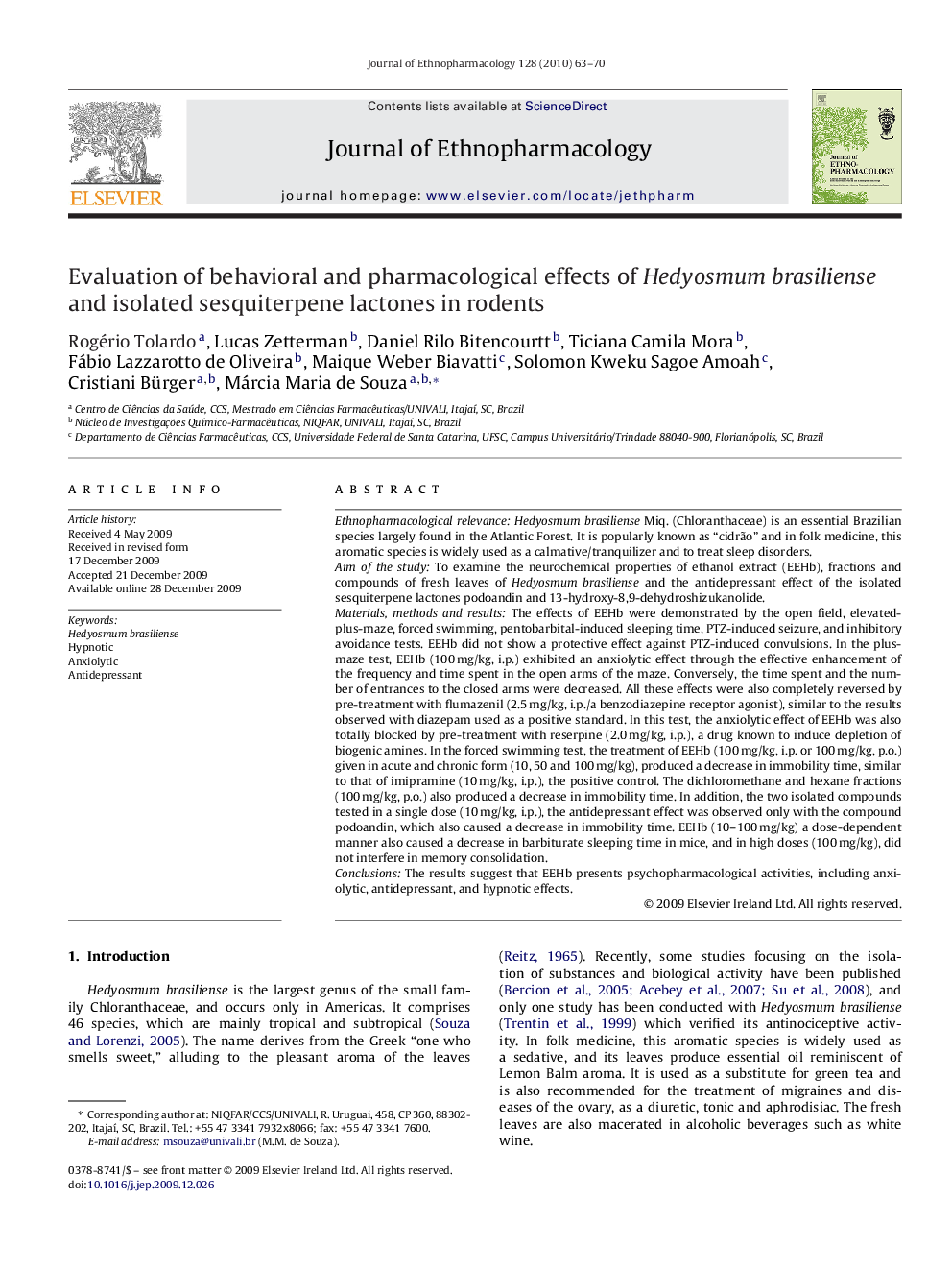| Article ID | Journal | Published Year | Pages | File Type |
|---|---|---|---|---|
| 2546635 | Journal of Ethnopharmacology | 2010 | 8 Pages |
Ethnopharmacological relevanceHedyosmum brasiliense Miq. (Chloranthaceae) is an essential Brazilian species largely found in the Atlantic Forest. It is popularly known as “cidrão” and in folk medicine, this aromatic species is widely used as a calmative/tranquilizer and to treat sleep disorders.Aim of the studyTo examine the neurochemical properties of ethanol extract (EEHb), fractions and compounds of fresh leaves of Hedyosmum brasiliense and the antidepressant effect of the isolated sesquiterpene lactones podoandin and 13-hydroxy-8,9-dehydroshizukanolide.Materials, methods and resultsThe effects of EEHb were demonstrated by the open field, elevated-plus-maze, forced swimming, pentobarbital-induced sleeping time, PTZ-induced seizure, and inhibitory avoidance tests. EEHb did not show a protective effect against PTZ-induced convulsions. In the plus-maze test, EEHb (100 mg/kg, i.p.) exhibited an anxiolytic effect through the effective enhancement of the frequency and time spent in the open arms of the maze. Conversely, the time spent and the number of entrances to the closed arms were decreased. All these effects were also completely reversed by pre-treatment with flumazenil (2.5 mg/kg, i.p./a benzodiazepine receptor agonist), similar to the results observed with diazepam used as a positive standard. In this test, the anxiolytic effect of EEHb was also totally blocked by pre-treatment with reserpine (2.0 mg/kg, i.p.), a drug known to induce depletion of biogenic amines. In the forced swimming test, the treatment of EEHb (100 mg/kg, i.p. or 100 mg/kg, p.o.) given in acute and chronic form (10, 50 and 100 mg/kg), produced a decrease in immobility time, similar to that of imipramine (10 mg/kg, i.p.), the positive control. The dichloromethane and hexane fractions (100 mg/kg, p.o.) also produced a decrease in immobility time. In addition, the two isolated compounds tested in a single dose (10 mg/kg, i.p.), the antidepressant effect was observed only with the compound podoandin, which also caused a decrease in immobility time. EEHb (10–100 mg/kg) a dose-dependent manner also caused a decrease in barbiturate sleeping time in mice, and in high doses (100 mg/kg), did not interfere in memory consolidation.ConclusionsThe results suggest that EEHb presents psychopharmacological activities, including anxiolytic, antidepressant, and hypnotic effects.
Graphical abstractFigure optionsDownload full-size imageDownload as PowerPoint slide
